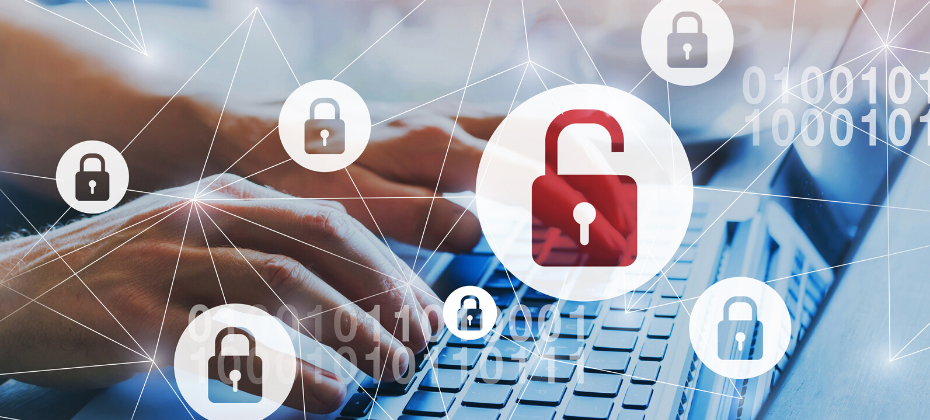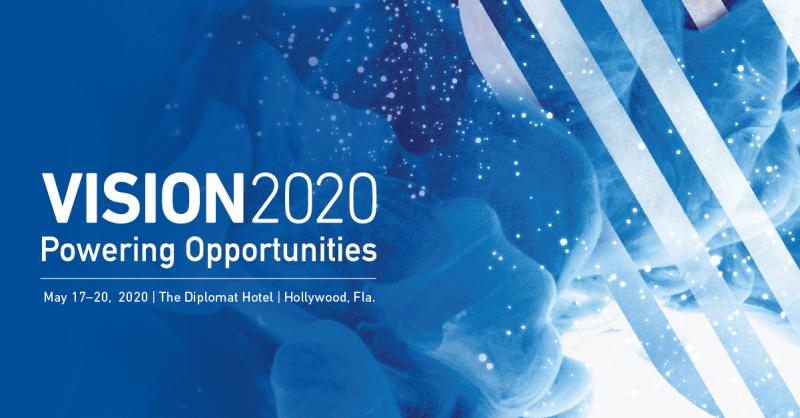Tag: synthetic identity

This article was updated on March 4, 2024. If you steal an identity to commit fraud, your success is determined by how long it takes the victim to find out. That window gets shorter as businesses get better at knowing when and how to reach an identity owner when fraud is suspected. In response, frustrated fraudsters have been developing techniques to commit fraud that does not involve a real identity, giving them a longer run-time and a bigger payday. That's the idea behind synthetic identity (SID) fraud — one of the fastest-growing types of fraud. Defining synthetic identity fraud Organizations tend to have different definitions of synthetic identity fraud, as a synthetic identity will look different to the businesses it attacks. Some may see a new account that goes bad immediately, while others might see a longer tenured account fall delinquent and default. The qualifications of the synthetic identity also change over time, as the fraudster works to increase the identity’s appearance of legitimacy. In the end, there is no person to confirm that fraud has occurred, in the very best case, identifying a synthetic identity is inferred and verified. As a result, inconsistent reporting and categorization can make tracking and fighting SID fraud more difficult. To help create a more unified understanding and response to the issue, the Federal Reserve and 12 fraud experts worked together to develop a definition. In 2021, the Boston Federal Reserve published the result, “Synthetic identity fraud is the use of a combination of personally identifiable information to fabricate a person or entity to commit a dishonest act for personal or financial gain."1 To break down the definition, personally identifiable information (PII) can include: Primary PII: Such as a name, date of birth (DOB), Social Security number (SSN) or another government-issued identifier. When combined, these are generally unique to a person or entity. Secondary PII: Such as an address, email, phone number or device ID. These elements can help verify a person or entity's identity. Synthetic identities are created when fraudsters establish an identity from scratch using fake PII. Or they may combine real and fake PII (I.e., a stolen SSN with a fake name and DOB) to create a new identity. Additionally, fraudsters might steal and use someone's SSN to create an identity - children, the elderly and incarcerated people are popular targets because they don't commonly use credit.4 But any losses would still be tied to the SID rather than the victim. Exploring the Impact of SID fraud The most immediate and obvious impact of SID fraud is the fraud losses. Criminals may create a synthetic identity and spend months building up its credit profile, opening accounts and increasing credit limits. The identities and behaviors are constructed to look like legitimate borrowers, with some having a record of on-time payments. But once the fraudster decides to monetize the identity, they can apply for loans and max out credit cards before ‘busting out’ and disappearing with the money. Aite-Novaric Group estimates that SID fraud losses totaled $1.8 billion in 2020 and will increase to $2.94 billion in 2024.2 However, organizations that do not identify SIDs may classify a default as a credit loss rather than a fraud loss. By some estimates, synthetic identity fraud could account for up to 20 percent of loan and credit card charge-offs, meaning the annual charge-off losses in the U.S. could be closer to $11 billion.3 Additionally, organizations lose time and resources on collection efforts if they do not identify the SID fraud. Those estimates are only for unsecured U.S. credit products. But fraudsters use synthetic identities to take out secured loans, including auto loans. As part of schemes used to steal relief funds during the pandemic, criminals used synthetic identities to open demand deposit accounts to receive funds. These accounts can be used to launder money from other sources and commit peer-to-peer payment fraud. Deposit account holders are also a primary source of cross-marketing for some financial institutions. Criminals can take advantage of vulnerable onboarding processes for deposit accounts where there’s low risk to the institution and receive offers for lending products. Building a successful SID prevention strategy Having an effective SID prevention strategy is more crucial than ever for organizations. Aside from fraud losses, consumers listed identity theft as their top concern when conducting activities online. And while 92% of businesses have an identity verification strategy in place, 63% of consumers are "somewhat confident" or "not very confident" in businesses' ability to accurately identify them online. Read: Experian's 2023 Identity and Fraud Report Many traditional fraud models and identity verification methods are not designed to detect fake people. And even a step up to a phone call for verification isn't enough when the fraudster will be the one answering the phone. Criminals also quickly respond when organizations update their fraud detection methods by looking for less-protected targets. Fraudsters have even signed their SIDs up for social media accounts and apps with low verification hurdles to help their SIDs pass identity checks.5 Understand synthetic identity risks across the lifecycle Synthetic Identities are dynamic. When lending criteria is tightened to synthetics from opening new accounts, they simply come back when they can qualify. If waiting brings a higher credit line, they’ll wait. It’s important to recognize that synthetic identity isn’t a new account or a portfolio management problem - it’s both. Use analytics that are tailored to synthetic identity Many of our customers in the financial services space have been trying to solve synthetic identity fraud with credit data. There’s a false sense of security when criteria is tightened and losses go down—but the losses that are being impacted tend to not be related to credit. A better approach to synthetic ID fraud leverages a larger pool of data to assess behaviors and data linkages that are not contained in traditional credit data. You can then escalate suspicious accounts to require additional reviews, such as screening through the Social Security Administration's Electronic Consent Based SSN Verification (eCBSV) system or more stringent document verification. Find a trusted partner Experian's interconnected data and analytics platforms offer lenders turnkey identity and synthetic identity fraud solutions. In addition, lenders can take advantage of the risk management system and continuous monitoring to look for signs of SIDs and fraudulent activity, which is important for flagging accounts after opening. These tools can also help lenders identify and prevent other common forms of fraud, including account takeovers, e-commerce fraud, child identity theft fraud and elderly fraud. Learn more about our synthetic identity fraud solutions. Learn more 1Federal Reserve Bank (2021). Defining Synthetic Identity Fraud 2Aite Novarica (2022). Synthetic Identity Fraud: Solution Providers Shining Light into the Darkness 3Experian (2022). Preventing synthetic identity fraud 4The Federal Reserve (2022). Synthetic Identity Fraud: What Is it and Why You Should Care? 5Experian (2022). Preventing synthetic identity fraud

What Is Identity Proofing? Identity proofing, authentication and management are becoming increasingly complex and essential aspects of running a successful enterprise. Organizations need to get identity right if they want to comply with regulatory requirements and combat fraud. It's also becoming table stakes for making your customers feel safe and recognized. Nearly 75 percent of consumers expect businesses to protect them online, and 70 percent say it's important for businesses they frequently deal with to identify them across visits.1 Identify proofing is the process organizations use to collect, validate and verify information about someone. There are two goals — to confirm that the identity is real (i.e., it's not a synthetic identity) and to confirm that the person presenting the identity is its true owner. The identity proofing process also relates to and may overlap with other aspects of identity management. Identity proofing vs identity authentication Identity proofing generally takes place during the acquisition or origination stages of the customer lifecycle — before someone creates an account or signs up for a service. Identity authentication is the ongoing process of re-checking someone's identity or verifying that they have the authorization to make a request, such as when they're logging into an account or trying to make a large transaction. READ: Leveraging Artificial Intelligence to Optimize Digital Identity Strategies How does identity proofing work? The National Institute of Standards and Technology (NIST) Special Publication 800-63-3, Digital Identity Guidelines, has an overview of the three stages of the identity proofing process: Resolution: The goal of the first step is to accurately identify the single, unique individual that the identity represents. Resolution is relatively easy when detailed identity information is provided. In the real world, collecting detailed data conflicts with the need to provide a good customer experience. Resolution still has to occur, but organizations have to resolve identities with the minimum amount of information. Validation: The validation step involves verifying that the person's information and documentation are legitimate, accurate and up to date. It potentially involves requesting additional evidence based on the level of assurance you need. Verification: The final step confirms that the claimed identity actually belongs to the person submitting the information. It may involve comparing physical documents or biometric data and liveness tests, such as a comparison of the driver's license to a selfie that the person uploads. The NIST guidelines are the standards that federal agencies must follow for their digital identity services, and industry often uses the same guidelines as a framework for their identity and access processes. The current NIST guidelines — Revision 3 — were updated in 2017 and have three identity assurance levels (or IALs). IAL 1: Doesn't require identity proofing to create an account. For example, you may be able to sign up for an online game or newsletter without submitting any identification. IAL 2: Requires users to submit identifying information and evidence either in-person or remotely. For example, when you need to upload a picture of your driver's license and a selfie to create an account or confirm a transaction. It also requires address confirmation and may include (but doesn't require) biometric checks, such as a fingerprint or face scan. IAL 3: Requires in-person or supervised remote identity verification, address verification and biometric checks. There is a proposal to update the NIST guidelines, and the NIST is requesting comments on the proposed Revision 4 through March 24, 2023. The updates aim to advance equity, give consumers additional choices, deter fraud and build on the lessons learned from previous revisions and real-world implementation. It also has four identity assurance levels, starting with IAL0, which is when there's no requirement for identity proofing. Service providers that offer identity proofing, verification and management services can get certified if they conform to the current NIST guidelines. For example, Experian's identity proofing solutions are NIST 800-63-3 IAL2 certified by Kantara Initiative. Building an effective identity proofing strategy By requiring identity proofing before account opening, organizations can help detect and deter identity fraud and other crimes. And although the NIST offers guidelines, you can use different online identity verification methods to implement an effective digital identity proofing and management system. These may include: Document verification plus biometric data: The consumer uploads a copy of an identification document, such as a driver's license, and takes a selfie or records a live video of their face. Database validations: The proofing solution verifies the shared identifying information, such as a name, date of birth, address and Social Security number against trusted databases, including credit bureau and government agency data. Knowledge-based authentication (KBA): The consumer answers knowledge-based questions, such as account information, to confirm their identity. It can be a helpful additional step, but they offer a low level of assurance, partially because data breaches have exposed many people's personal information. In part, the processes you'll use may depend on business policies, associated risks and industry regulations, such as know your customer (KYC) and anti-money laundering (AML) requirements. But organizations also have to balance security and ease of use. Each additional check or requirement you add to the identity proofing flow can help detect and prevent fraud, but the added friction they bring to your onboarding process can also leave customers frustrated — and even lead to customers abandoning the process altogether. WATCH: Webinar: Identity Evolved — Building consumer trust and engagement Finding the right amount of friction can require a layered, risk-based approach. And running different checks during identity proofing can help you gauge the risk involved. For example, comparing information about a device, such as its location and IP address, to the information on an application. Or sending a one-time password (OTP) to a mobile device and checking whether the phone number is registered to the applicant's name. With the proper systems in place, you can use high-risk signals to dynamically adjust the proofing flow and require additional identity documents and checks. At the same time, if you already have a high level of assurance about the person's identity, you can allow them to quickly move through a low-friction flow. Experian goes beyond identity proofing Experian builds on its decades of experience with identity management and access to multidimensional data sources to help organizations onboard, authenticate and manage customer identities. With a single API integration, Experian CrossCore® gives you access to a suite of identity proofing and fraud detection capabilities, including identity element verifications, risk analytics, device intelligence, document validation and biometrics. CrossCore Doc Capture offers end-to-end support for document and selfie verification, and you can use step-up OTP or KBV checks when appropriate. Learn more

Experian’s Sure Profile was selected as a Platinum winner in the “Fraud and Security Innovation” category in the sixth annual Fintech & Payments awards from Juniper Research, a firm dedicated to delivering thought leadership and analysis in the Fintech and Payment industries. An innovative service in the fight against synthetic identity fraud, Sure Profile is a comprehensive credit profile that provides a composite history of a consumer’s identification, public record, and credit information in order to detect synthetic identities. It utilizes premium data to help businesses identify potential synthetic fraud threats across credit inquiries, thus allowing lenders to transact more confidently with the vast majority of legitimate consumers. “Experian has always been a leader in delivering innovative services that both combat fraud and provide identity verification and trust to lending environments. Sure Profile delivers an industry-first fraud offering—integrated directly into the credit profile—that mitigates lender losses while protecting millions of legitimate consumers’ identities,” said Keir Breitenfeld, Senior Vice President, Portfolio Marketing, Experian Decision Analytics. “In times of rapid changes to customer interactions, growth strategies, and risk management practices, it’s particularly important to focus on building tools that can help businesses make better decisions and I’m proud that Experian has again provided an instrument to enable those decisions.” To learn more about Sure Profile and how Experian is working to solve this multibillion-dollar problem, visit us or request a call. Learn more

The sharp uptick in fraud that coincided with the digital evolution made it clear that banks, credit unions, and fintechs need to invest in a strategy that utilizes identity layers to keep their customers and their finances safe. The steady rise in fraud over the last several years spiked—payment fraud rose 70% last year and is expected to increase by 95% in 2021—making it more challenging than ever to address the fraud threat while meeting increasing customer expectations. The rising fraud threat 2020 saw a rapid influx of customers using digital channels and the amount of data flowing into financial systems. There’s been a seismic shift, and we’re not going back. According to a recent study, 80% of consumers now prefer to manage their finances digitally, leaving the door open for fraudsters to take advantage of digital newbies. The increase in online activity corresponded with criminal activity. The rates of synthetic identity, account opening, and account takeover fraud have risen as fraudsters’ tactics have evolved. 80% of fraud losses now come from synthetic identities In 2020 the rate of new account credit card fraud attempts rose 48% Account takeover accounted for 54% of all fraud attacks in 2020 Fraudsters will continue to take advantage of current conditions, moving from stimulus-related fraud back to more traditional forms of financial theft, and financial institutions must adapt in turn with robust identity layers. Resolving the identity threat In our recent white paper, developed in partnership with One World Identity, we explore how businesses can address the fraud threat. It requires a multilayered identity proofing strategy for both onboarding and ongoing authentication. By doing this, financial institutions can gain a holistic view of consumers and their associated risks, decreasing friction while enabling robust fraud protection. To learn more, download our “Improving Fraud by Increasing Identity Layers” white paper. Download white paper

For the last several months, Experian has participated as the only credit bureau in the pilot of the electronic Consent Based Social Security Number (SSN) Verification (eCBSV) service. As we move forward to general rollout and expanded availability later this year, it’s time to review the benefits of eCBSV and how it helps businesses prevent synthetic identity fraud. Service and program overview The eCBSV service combats synthetic identity fraud by comparing data provided electronically by approved financial institutions against the Social Security Administration’s (SSA) database in real time. This service helps financial institutions verify SSNs more efficiently and enables improved experiences for identifying legitimate or possibly synthetic identities applying for your products. The verification process begins with consent from the SSN holder – and with eCBSV this consent is provided electronically rather than via a wet signature. Then, the SSN is checked against the SSA database to validate the SSN, name, and date of birth combination are or are not a match. The verification will also indicate if the SSN is listed as deceased with the SSA. Together, these factors can help flag whether or not an identity is synthetic. By managing this process electronically, it is faster, more secure, and more efficient than before, offering an improved experience for consumers and the financial institutions that service them. Layering solutions While eCBSV is an excellent step forward in the fight against the rising threat of synthetic identity fraud, a layered fraud mitigation strategy is still necessary. It’s only by layering solutions that financial institutions can accurately identify different types of fraud and provide them with the correct treatment, which is especially important when it comes to rooting out fraud when it’s already embedded in a portfolio. To learn more about how Experian is helping to combat synthetic identity fraud and how eCBSV can benefit your financial institution, request a call. Request a call

It’s obvious that 2020 was a year of unprecedented change and created brand new opportunities for fraud. In 2021, fraudsters will continue to iterate on new and old methods of attack, requiring businesses to remain flexible and proactive to prevent losses. We created the 2021 Future of Fraud Forecast to help businesses anticipate new types of fraud and prepare and protect consumers on the road ahead. Here are the trends we expect to see over the coming year: Putting a Face to Frankenstein IDs: Synthetic identity fraud will start to rely on “Frankenstein faces” for biometric verification. “Too Good to Be True” COVID Solutions: The promise of at-home test kits, vaccines and treatments will be used as means for sophisticated phishing and social engineering schemes. Stimulus Fraud Activity, Round Two: Fraudsters will take advantage of additional stimulus funding by using stolen data to intercept payments. Say ‘Hello’ to Constant Automated Attacks: Once the stimulus fraud attacks run their course, hackers will increasingly turn to automated methods. Survival of the Fittest for Small Businesses: In 2021, businesses with lackluster fraud prevention tools will suffer large financial losses. To learn more about how to protect your business and customers, download the Future of Fraud Forecast and check out Experian’s fraud prevention solutions. Future of Fraud Forecast Request a call

Recently, I shared articles about the problems surrounding third-party and first-party fraud. Now I’d like to explore a hybrid type – synthetic identity fraud – and how it can be the hardest type of fraud to detect. What is synthetic identity fraud? Synthetic identity fraud occurs when a criminal creates a new identity by mixing real and fictitious information. This may include blending real names, addresses, and Social Security numbers with fabricated information to create a single identity. Once created, fraudsters will use their synthetic identities to apply for credit. They employ a well-researched process to accumulate access to credit. These criminals often know which lenders have more liberal identity verification policies that will forgive data discrepancies and extend credit to people who appear to be new or emerging consumers. With each account that they add, the synthetic identity builds more credibility. Eventually, the synthetic identity will “bust out,” or max out all available credit before disappearing. Because there is no single person whose identity was stolen or misused there’s no one to track down when this happens, leaving businesses to deal with the fall out. More confounding for the lenders involved is that each of them sees the same scam through a different lens. For some, these were longer-term reliable customers who went bad. For others, the same borrower was brand new and never made a payment. Synthetic identities don't appear consistently as a new account problem or a portfolio problem or correlate to thick- or thin-filed identities, further complicating the issue. How does synthetic identity fraud impact me? As mentioned, when synthetic identities bust out, businesses are stuck footing the bill. Annual SIF (synthetic identity fraud) charge-offs in the United States alone could be as high as $11 billion. – Steven D’Alfonso, research director, IDC Financial Insights1 Unlike first- and third-party fraud, which deal with true identities and can be tracked back to a single person (or the criminal impersonating them), synthetic identities aren’t linked to an individual. This means that the tools used to identify those types of fraud won’t work on synthetics because there’s no victim to contact (as with third-party fraud), or real customer to contact in order to collect or pursue other remedies. Solving the synthetic identity fraud problem Preventing and detecting synthetic identities requires a multi-level solution that includes robust checkpoints throughout the customer lifecycle. During the application process, lenders must look beyond the credit report. By looking past the individual identity and analyzing its connections and relationships to other individuals and characteristics, lenders can better detect anomalies to pinpoint false identities. Consistent portfolio review is also necessary. This is best done using a risk management system that continuously monitors for all types of fraudulent activities across multiple use cases and channels. A layered approach can help prevent and detect fraud while still optimizing the customer experience. With the right tools, data, and analytics, fraud prevention can teach you more about your customers, improving your relationships with them and creating opportunities for growth while minimizing fraud losses. To wrap up this series, I’ll explore account takeover fraud and how the correct strategy can help you manage all four types of fraud while still optimizing the customer experience. To learn more about the impact of synthetic identities, download our “Preventing Synthetic Identity Fraud” white paper and call us to learn more about innovative solutions you can use to detect and prevent fraud. Contact us Download whitepaper 1Synthetic Identity Fraud Update: Effects of COVID-19 and a Potential Cure from Experian, IDC Financial Insights, July 2020

Synthetic identity fraud, otherwise known as SID fraud, is reportedly the fastest-growing type of financial crime. One reason for its rapid growth is the fact that it’s so hard to detect, and thus prevent. This allows the SIDs to embed within business portfolios, building up lines of credit to run up charges or take large loans before “busting out” or disappearing with the funds. In Experian’s recent perspective paper, Preventing synthetic identity fraud, we explore how SID differs from other types of fraud, and the unique steps required to prevent it. The paper also examines the financial risks of SID, including: $15,000 is the average charge-off balance per SID attack Up to 15% of credit card losses are due to SID 18% - the increase in global card losses every year since 2013 SID is unlike any other type of fraud and standard fraud protection isn’t sufficient. Download the paper to learn more about Experian’s new toolset in the fight against SID. Download the paper

The CU Times recently reported on a nationwide synthetic identity fraud ring impacting several major credit unions and banks. Investigators for the Federal and New York governments charged 13 people and three businesses in connection to the nationwide scheme. The members of the crime ring were able to fraudulently obtain more than $1 million in loans and credit cards from 10 credit unions and nine banks. Synthetic Identity Fraud Can’t Be Ignored Fraud was on an upward trend before the pandemic and does not show signs of slowing. Opportunistic criminals have taken advantage of the shift to digital interactions, loosening of some controls in online transactions, and the desire of financial institutions to maintain their portfolios – seeking new ways to perpetrate fraud. At the onset of the COVID-19 pandemic, many financial institutions shifted their attention from existing plans for the year. In some cases they deprioritized plans to review and revise their fraud prevention strategy. Over the last several months, the focus swung to moving processes online, maintaining portfolios, easing customer friction, and dealing with IT resource constraints. While these shifts made sense due to rapidly changing conditions, they may have created a more enticing environment for fraudsters. This recent synthetic identity fraud ring was in place long before COVID-19. That said, it still highlights the need to have a prevention and detection plan in place. Financial institutions want to maintain their portfolios and their customer or member experience. However, they can’t afford to table fraud plans in the meantime. “72% of FI executives surveyed believe synthetic identity fraud to be more challenging than identity theft. This is due to the fact that it is harder to detect—either crime rings nurture accounts for months or years before busting out with six-figure losses, or they are misconstrued as credit losses, and valuable agent time is spent trying to collect from someone who doesn’t exist,” says Julie Conroy, Research Director at Aite Group. Prevention and Detection Putting the fraud strategy discussion on hold—even in the short term—could open up a financial institution to potential risk at time when cost control and portfolio maintenance are watch words. Canny fraudsters are on the lookout for financial institutions with fewer protections. Waiting to implement or update a fraud strategy could open a business up to increased fraud losses. Now is the time to review your synthetic identity fraud prevention and detection strategies, and Experian can help. Our innovative new tool in the fight against synthetic identity fraud helps financial institutions stop fraudsters at the door. Learn more

For the last several years, as the global economy flourished, the opportunities created by removing friction and driving growth guided business strategies governing identity and fraud. The amount of profitable business available in a low-friction environment simply outweighed the fraud that could be mitigated with more stringent verification methods. Now that we’re facing a global crisis, it’s time to reconsider the approach that drove the economic boom that defined that last decade. Recognizing how economic changes impact fraud At the highest level, we separate fraud into two types; third party fraud and first party fraud. In simple terms, third party fraud involves the misuse of a real customer’s identity or unauthorized access to a real customer’s accounts or assets. First party fraud involves the use of an identity that the fraudster controls—whether it’s their own identity, a manipulated version of their own identity, or a synthetic identity that they have created. The important difference in this case is that the methods of finding and stopping third party fraud remain constant even in the event of an economic downturn – establish contact with the owner of the identity and verify whether the events are legitimate. Fraud tactics will evolve, and volumes increase as perpetrators also face pressure to generate income, but at the end of the day, a real person is being impersonated, and a victim exists that will confirm when fraud is taking place. Changes in first party fraud during an economic downturn are dramatically different and much more problematic. The baseline level of first party fraud using synthetic, manipulated and the perpetrator’s own identity continue, but they are augmented by real people facing desperate circumstances and existing “good” customers who over-extend while awaiting a turn-around. The problem is that there is no “victim” to confirm fraud is occurring, and the line between fraud (which implies intent) and credit default (which does not) becomes very difficult to navigate. With limited resources and pressures of their own, at some point lenders must try to distinguish deliberate theft from good customers facing bad circumstances and manage cases accordingly. The new strategy When times are good, it’s easier to build up a solid book of business with good customers. Employment rates are high, incomes are stable, and the risks are manageable. Now, we’re experiencing rapidly changing conditions, entire industries are disrupted, unemployment claims have skyrocketed and customers will need assistance and support from their lenders to help them weather the storm. This is a reciprocal relationship – it behooves those same lenders to help their customers get through to the other side. Lenders will look to limit losses and strengthen relationships. At the same time, they’ll need to reassess their existing fraud and identity strategies (among others) as every interaction with a customer takes on new meaning. Unexpected losses We’ve all been bracing for a recession for a while. But no one expected it to show up quite like it did. Consumers who have been model customers are suddenly faced with a complete shift in their daily life. A job that seemed secure may be less so, investments are less lucrative in the short term, and small business owners are feeling the pressure of a change in day-to-day commerce. All of this can lead to unexpected losses from formerly low-risk customers. As this occurs, it becomes more critical than ever to identify and help good customers facing grim circumstances and find different ways to handle those that have malicious intent. Shifting priorities When the economy was strong, many businesses were able to accept higher losses because those losses were offset by immense growth. Unfortunately, the current crisis means that some of those policies could have unforeseen consequences. For instance – the loss of the ability to differentiate between a good customer who has fallen on hard times and someone who’s been a bad actor from the start. Additionally, businesses need to revise their risk management strategies to align with shifting customer needs. The demand for emergency loans and will likely rise, while loans for new purchases like cars and homes will fall as consumers look to keep their finances secure. As the need to assist customers in distress rises and internal resources are stressed, it’s critical that companies have the right tools in place to triage and help customers who are truly in need. The good news The tools businesses like yours need to screen first party fraud already exist. In fact, you may already have the necessary framework in place thanks to an existing partnership, and a relatively simple process could prepare your business to properly screen both new and existing customers at every touchpoint. This global crisis is nowhere near over, but with the right tools, your business can protect itself and your customers from increased fraud risks and losses of all sorts – first party, stolen identities, or synthetic identities, and come out on the other side even stronger. Contact Experian for a review of your current fraud strategy to help ensure you’re prepared to face upcoming challenges. Contact us

Update: After closely monitoring updates from the WHO, CDC, and other relevant sources related to COVID-19, we have decided to cancel our 2020 Vision Conference. If you had the chance to experience tomorrow, today, would you take it? What if it meant you could get a glimpse into the future technology and trends that would take your organization to the next level? If you’re looking for a competitive edge – this is it. For more than 38 years, Experian’s premier conference has connected business leaders to data-driven ideas and solutions, fueling them to target new markets, grow existing customer bases, improve response rates, reduce fraud and increase profits. What’s in it for you? Everything to gain and nothing to lose. Are you a marketer? These sessions were made to drive your conversion rates to new heights: Know your customers via omnichannel marketing: Your customers are everywhere, but can you reach them? Learn how to drive business-expansion strategy, brand affinity and customer engagement across multiple channels. Plus, gain insight into connecting with customers via one-to-one messaging. By invitation only, the future of ITA marketing: An evolving landscape means marketers face new challenges in effectively targeting consumers while staying compliant. In this session, we’ll explore how you can leverage fair lending-friendly marketing data for targeting, analysis and measurement. Want the latest in technology trends? Dive into discussions to transform your customer experience: Credit in the age of technology transformation: Machine learning and artificial intelligence are the current darlings of big data, but the platform that drives the success of any big data endeavor is crucial. This session will dive into what happens behind the curtain. Put away your plastic – next-generation identity: An industry panel of experts discusses the newest digital identity and authentication capabilities – those in use today and also exciting solutions on the horizon. How about for the self-proclaimed data geeks? Analyze these: Alternative data: Listen in on an in-depth conversation about creative and impactful examples of using emerging data assets, such as alternative and consumer-permissioned data, for improved consumer inclusion, risk assessment and verification services. The next wave in open data: Experian will share their views on the potential of advanced data and models and how they benefit the global value chain – from consumer scores to business opportunities – regardless of local regulations. And the risk masters? Join us as we kick fraud to the curb: Understanding and tackling synthetic ID fraud: Synthetic IDs present a serious challenge for our entire industry. This expert panel will explore the current landscape – what’s working and what’s not, the expected impact of the next generation SSA eCBSV service, and best practice prevention methods. You are your ID – the new reality of biometrics: Consumers are becoming increasingly comfortable with biometrics. Just as CLEAR has transformed how we use our biometric identity to move through airports, sports venues and more, financial transactions can also be made friction-free. The point is, there’s something for everyone at Vision 2020. It’s not just another conference. Trade in stuffy tradeshow halls and another tri-fold brochure for the insights and connections you need to take your career and organization to the next level. Like technology itself, Vision 2020 promises to connect us, unify us and enable us all to create a better tomorrow. Join us for unique networking opportunities, one-on-one conversations with subject-matter experts and more than 50 breakout sessions with the industry’s most sought-after thought leaders.

It may be a new decade of disruption, but one thing remains constant – the consumer is king. As such, customer experience (and continually evolving digital transformations necessary to keep up), digital expansion and all things identity will also reign supreme as we enter this new set of Roaring 20s. Here are seven of the top trends to keep tabs of through 2020 and beyond. 1. Data that does more – 100 million borrowers and counting Traditional, alternative, public record, consumer-permissioned, small business, big business, big, bigger, best – data has a lot of adjectives preceding it. But no matter how we define, categorize and collate data, the truth is there’s a lot of it that’s untapped, which is keeping financial institutions from operating at their max efficiency levels. Looking for ways to be bigger and bolder? Start with data to engage your credit-worthy consumer universe and beyond. Across the entire lending lifecycle, data offers endless opportunities – from prospecting and acquisitions to fraud and risk management. It fuels any technology solution you have or may want to implement over the coming year. Additionally, Experian is doing their part to create a more holistic picture of consumer creditworthiness with the launch of Experian LiftTM in November. The new suite of credit score products combines exclusive traditional credit, alternative credit and trended data assets, intended to help credit invisible and thin-file consumers gain access to fair and affordable credit. "We're committed to improving financial access while helping lenders make more informed decisions. Experian Lift is our latest example of this commitment brought to life,” said Greg Wright, Executive Vice President and Chief Product Officer for Experian Consumer Information Services. “Through Experian Boost, we're empowering consumers to play an active role in building their credit histories. And, with Experian Lift, we're empowering lenders to identify consumers who may otherwise be excluded from the traditional credit ecosystem,” he said. 2. Identity boom for the next generation Increasingly digital lifestyles have put personalization and frictionless transactions on hyperdrive. They are the expectation, not a nice-to-have. Having customer intelligence will become a necessary survival strategy for those in the market wanting to compete. Identity is not just for marketing purposes; it must be leveraged across the lending lifecycle and every customer interaction. Fragmented customer identities are more than flawed for decisioning purposes, which could potentially lead to losses. And, of course, the conversation around identity would be incomplete without a nod to privacy and security considerations. With the roll-out of the California Consumer Privacy Act (CCPA) earlier this month, we will wait to see if the other states follow suit. Regardless, consumers will continue to demand security and trust. 3. All about artificial intelligence and machine learning We get it – we all want the fastest, smartest, most efficient processes on limited – and/or shrinking – budgets. But implementing advanced analytics for your financial institution doesn’t have to break the bank. And, when it comes to delivering services and messaging to customers the way they want it, how to do that means digital transformation – specifically, leveraging big data and actionable analytics to evaluate risk, uncover industry intel and improve decisioning. One thing’s for certain, financial institutions looking to compete, gain traction and pull away from the competition in this next decade will need to do so by leveraging a future-facing partner’s expertise, platforms and data. AI and machine learning model development will go into hyperdrive to add accuracy, efficiency, and all-out speed. Real-time transactional processing is where it’s at. 4. Customer experience drives decisioning and everything Faster, better, more frictionless. 2020 and the decade will be all about making better decisions faster, catering to the continually quickening pace of consumer attention and need. Platforms and computing language aside, how do you increase processing speed at the same time as increasing risk mitigation? Implementing decisioning environments that cater to consumer preferences, coupled with best-in-class data are the first two steps to making this happen. This can facilitate instant decisioning within financial institutions. Looking beyond digital transformation, the next frontier is digital expansion. Open platforms enable financial institutions to readily add solutions from numerous providers so that they can connect, access and orchestrate decisions across multiple systems. Flexible APIs, single integrations and better strategy and design build the foundation of the framework to be implemented to enhance and elevate customer experience as it’s known today. 5. Credit marketing that keeps up with the digital, instant-gratification age Know your customer may be a common acronym for the financial services industry, but it should also be a baseline for determining whether to send a specific message to clients and prospects. From the basics, like prescreen, to omni-channel marketing campaigns, financial institutions need to leverage the communication channels that consumers prefer. From point of sale to mobile – there are endless possibilities to fit into your consumers’ credit journey. Marketing is clearly not a one-and-done tactic, and therefore multi-channel prequalification offers and other strategies will light the path for acquisitions and cross-sell/up-sell opportunities to come. By developing insights from customer data, financial institutions have a clear line of sight into determining optimal strategies for customer acquisition and increasing customer lifetime value. And, at the pinnacle, the modern customer acquisition engine will continue to help financial institutions best build, test and optimize their customer channel targeting strategies faster than ever before. From segmentation to deployment, and the right data across it all, today and tomorrow’s technology can solve many of financial organizations’ age-old customer acquisition challenges. 6. Three Rs: Recession, regulatory and residents of the White House Last March, the yield curve inverted for the first time since 2007. Though the timing of the next economic correction is debated, messaging is consistent around making a plan of action now. Whether it’s arming your collections department, building new systems, updating existing systems, or adjusting rules and strategy, there are gaps every organization needs to fill. By leveraging the stability of the economy now, financial institutions can put strategies in place to maximize profitability, manage risk, reduce bad debt/charge-offs, and ensure regulatory compliance among their list of to-do’s, ultimately resulting in a more efficient, better-performing program. Also, as we near the election later this year, the regulatory landscape will likely change more than the usual amount. Additionally, we will witness the first accounts of what CECL looks like for SEC-filing financial institutions (and if that will suggest anything for how non-SEC-filing institutions may fare as their deadline inches closer), as well as see the initial implications of the CCPA roll out and whether it will pave a path for other states to follow. As system sophistication continues to evolve, so do the risks (like security breaches) and new regulatory standards (like GDPR and CCPA) which provide reasons for organizations to transform. 7. Focus on fraud (in all forms) With evolving technology, comes evolved fraudsters. Whether it’s loyalty and rewards programs, account openings, breaches, there are so many angles and entry points. Synthetic identity fraud is the fastest-growing type of financial crime in the United States. The cost to businesses is estimated to grow to $1.2 billion by 2020, according to the Aite Group. To ensure the best protection for your business and your customers, a layered, risk-based approach to fraud management provides the highest levels of confidence in the industry. Balance is key – while being compliant with regulatory requirements and conscious of user experience, ensuring consumers’ peace of mind is priority one. Not a new trend, but recognizing fraud and recognizing good consumers will save continue to save financial institutions money and reputational harm, driving significant improvement in key performance indicators. Using the right data (and aggregating multiple data sets) and digital device intelligence tools is the one-two punch to protect your bottom line. For all your needs in 2020 and throughout the next decade, Experian has you covered. Learn more

Sometimes, the best offense is a good defense. That’s certainly true when it comes to detecting synthetic identities, which by their very nature become harder to find the longer they’ve been around. To launch an offense against synthetic identity fraud, you need to defend yourself from it at the top of your new customer funnel. Once fraudsters embed their fake identity into your portfolio, they become nearly impossible to detect. The Challenge Synthetic identity fraud is the fastest-growing type of financial crime in the United States. The cost to businesses is hard to determine because it’s not always caught or reported, but the amounts are staggering. According to the Aite Group, it was estimated to total at least $820 million in 2017 and grow to $1.2 billion by 2020. This type of theft begins when individual thieves and large-scale crime rings use a combination of compromised personal information—like unused social security numbers—and fabricated data to stitch together increasingly sophisticated personas. These well-crafted synthetic identities are hard to differentiate from the real deal. They often pass Know Your Customer, Customer Identification Program and other onboarding checks both in person and online. This puts the burden on you to develop new defense strategies or pay the price. Additionally, increasing pressure to grow deposits and expand loan portfolios may coincide with the relaxation of new customer criteria, allowing even more fraudsters to slip through the cracks. Because fraudsters nurture their fake identities by making payments on time and don’t exhibit other risk factors as their credit limits increase, detecting synthetic identities becomes nearly impossible, as does defending against them. How This Impacts Your Bottom Line Synthetic identity theft is sometimes viewed as a victimless crime, since no single individual has their entire identity compromised. But it’s not victimless. When undetected fraudsters finally max out their credit lines before vanishing, the financial institution is usually stuck footing the bill. These same fraudsters know that many financial institutions will automatically settle fraud claims below a specific threshold. They capitalize on this by disputing transactions just below it, keeping the goods or services they purchased without paying. Fraudsters can double-dip on a single identity bust-out by claiming identity theft to have charges removed or by using fake checks to pay off balances before maxing out the credit again and defaulting. The cost of not detecting synthetic identities doesn’t stop at the initial loss. It flows outward like ripples, including: Damage to your reputation as a trusted organization Fines for noncompliance with Know Your Customer Account opening and maintenance costs that are not recouped as they would be with a legitimate customer Mistakenly classifying fraudsters as bad debt write offs Monetary loss from fraudsters’ unpaid balances Rising collections costs as you try to track down people who don’t exist Less advantageous rates for customers in the future as your margins grow thinner These losses add up, continuing to impact your bottom line over and over again. Defensive Strategies So what can you do? Tools like eCBSV that will assist with detecting synthetic identities are coming but they’re not here yet. And once they’re in place, they won’t be an instant fix. Implementing an overly cautious fraud detection strategy on your own will cause a high number of false positives, meaning you miss out on revenue from genuine customers. Your best defense requires finding a partner to help you implement a multi-layered fraud detection strategy throughout the customer lifecycle. Detecting synthetic identities entails looking at more than a single factor (like length of credit history). You need to aggregate multiple data sets and connect multiple customer characteristics to effectively defend against synthetic identity fraud. Experian’s synthetic identity prevention tools include Synthetic Identity High Risk Score to incorporate the history and past relationships between individuals to detect anomalies. Additionally, our digital device intelligence tools perform link analyses to connect identities that seem otherwise separate. We help our partners pinpoint false identities not associated with an actual person and decrease charge offs, protecting your bottom line and helping you let good customers in while keeping false personas out. Find out how to get your synthetic identity defense in place today.

It’s Halloween time – time for trick or treating, costume parties and monsters lurking in the background. But this year, the monsters aren’t just in the background. They’re in your portfolio. This year, “Frankenstein” has another meaning. Much more ominous than the neighbor kid in the costume. “Frankenstein IDs” refer to synthetic identities — a type of fraud carried out by criminals that have created fictitious identities. Just as Dr. Frankenstein’s monster was stitched together from parts, synthetic IDs are stitched together pieces of mismatched identities — some fake, some real, some even deceased. It typically takes fraudsters 12 to 18 months to create and nurture a synthetic identity before it’s ready to "bust out" – the act of building a credit history with the intent of maxing out all available credit and eventually disappearing. That means fraudsters are investing money and time to build numerous tradelines, ensure these "fake" identities are in good credit standing, and ultimately steal the largest amount of money possible. “Wait Master, it might be dangerous . . . you go, first.” — Igor Synthetic identities are a notable challenge for many financial institutions and retail organizations. According to the recently released Federal Reserve Board White Paper, synthetic identity fraud accounts for roughly 20% of all credit losses, and cost U.S. businesses roughly $6 billion in 2016 with an estimated 41% growth over 2 years. 85-95% of applicants identified as potential synthetic are not even flagged by traditional fraud models. The Social Security Administration recently announced plans for the electronic Consent Based Social Security Number Verification service – pilot program scheduled for June 2020. This service is designed to bring efficiency to the process for verifying Social Security numbers directly with the government agency. Once available, this verification could be an important tool in the fight against the elusive “Frankenstein” identity monster. But with the Social Security Administration's pilot program not scheduled for launch until the middle of next year, how can financial institutions and other organizations bridge the gap and adequately prepare for a potential uptick in synthetic identity fraud attacks? It comes down to a multilayered approach that relies on advanced data, analytics, and technology — and focuses on identity. Any significant progress in making synthetic identities easier to detect could cost fraudsters significant time and money. Far too many financial institutions and other organizations depend solely on basic demographic information and snapshots in time to confirm the legitimacy of an identity. These organizations need to think beyond those capabilities. The real value of data in many cases lies between the data points. We have seen this with synthetic identity — where a seemingly legitimate identity only shows risk when we can analyze its connections and relationships to other individuals and characteristics. In addition to our High Risk Fraud Score, we now have a Synthetic Fraud Risk Level Indicator available on credit profiles. These advanced detection capabilities are delivered via the simplicity of a straightforward indicator returned on the credit profile which lenders can use to trigger additional identity verification processes. While there are programs and initiatives in the works to help financial institutions and other organizations combat synthetic identity fraud, it's important to keep in mind there's no silver bullet, or stake to the heart, to completely keep these Frankenstein IDs out. Oh, and don’t forget… “It’s pronounced ‘Fronkensteen.’ ” — Dr. Frankenstein

Experian is excited to have been chosen as one of the first data and analytics companies that will enable access to Social Security Administration (SSA) data for the purposes of verifying identity against the Federal Agency’s records. The agency’s involvement in the wake of Congressional interest and successful legislation will create a seismic shift in the landscape of identity verification. Ultimately, the ability to leverage SSA data will reduce the impact of identity fraud and synthetic identity and put real dollars back into the pockets of people and businesses that absorb the costs of fraud today. As this era of government and private sector collaboration begins, many of our clients and partners are breathing a sigh of relief. We see this in a common question our customers ask every day, “Do I still need an analytical solution for synthetic ID now that eCBSV is on the horizon?” The common assumption is that help is on the way and this long tempest of rising losses and identity uncertainty is about to leave us. Or is it? We don’t believe it’s the end of the synthetic ID storm. This is the eye. Rather than basking in the calm light of this moment, we should be thinking ahead and assessing our vulnerabilities because the second half of this storm will be worse than the first. Consider this: The people who develop and exploit synthetic IDs are playing a long game. It takes time, research, planning and careful execution to create an identity that facilitates fraud. The bigger the investment, the bigger the spoils will be. Synthetic ID are being used to purchase luxury automobiles. They’re passing lender marketing criteria and being offered credit. The criminals have made their investment, and it’s unlikely they will walk away from it. So, what does SSA’s pending involvement mean to them? How will they prepare? These aren’t hard questions. They’ll do what you would do in the eye of a storm — maximize the value of the preparations that are in place. Gather what you can quickly and brace yourself for the uncertainty that’s coming. In short, there’s a rush to monetize synthetic IDs on the horizon, and this is no time to declare ourselves safe. It’s doubtful that the eCBSV process will be the silver bullet that ends synthetic ID fraud — and certainly not on day one. It’s more likely that the physical demands of the data exchange, volume constraints, response times and the actionability of the results will take time to optimize. In the meantime, the criminals aren’t going to sit by and watch as their schemes unravel and lose value. We should take some comfort that we’ve made it through the first half of the storm, but recognize and prepare for what still needs to be faced.